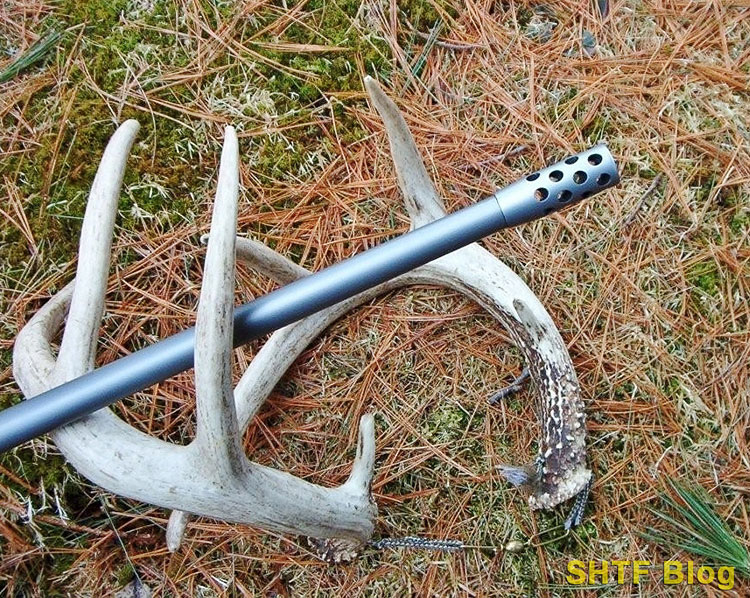
Looking for a new end to your your barrel? The muzzle brakes vs compensators debate rages on.
I see this topic occasionally pops up on the internet, with much of the coverage centering on AR-15s. Makes lots of sense given that “America’s Rifle” has a threaded muzzle capable of accommodating a huge variety of muzzle devices; certainly too many to list here.
However, some confusion still persists regarding their respective purposes. Hence, this article.
To help sort things out, let’s lump the devices into two main categories:
Flash Hiders. Their primary purpose is reduction of muzzle-flash. It’s worth noting some of these devices work amazingly well, and some even do double-duty as suppressor adapters.
Recoil-reduction Devices. Most are either muzzle brakes or compensators. The various brakes are designed to soften recoil. Compensators can do that too, but most are built to reduce muzzle climb.
Optimum results are usually achieved using purpose-built devices, although some can cover both of the above categories. Sound attenuation is also worth mentioning. Most silencers (or suppressors) not only quiet the report of a firearm, but they can also eliminate the need for a flash hider, with a further benefit of less recoil.
And then there’s barrel porting, most commonly used for shotguns and handguns. In other words, AR-type platforms aren’t the only game in town. Recoil-reducing technologies have long involved numerous other firearms from Thompson Submachineguns to sporting arms. Some do a very good job, although there’s usually no free lunch. Case in point, the following story.
Muzzle Brake Noise
Opening day of deer season, November, 2002: The morning dawned cold but calm, inspiring hopes of increased deer movement. I was tucked in makeshift ground blind on the spine of a ridge with a rare bonus doe tag in my wallet. As the first welcome rays of sunlight filtered through the trees, a large deer materialized in dark cover. Its head was obscured by brush, directly above a hot scrape; classic behavior for a buck.
Normally I’d hold out for a set of good antlers but, with that extra doe-only tag, this deer was fair game either way. After squeezing off a shot, the deer piled up in the scrape. Meanwhile, my buddy, Mike, was in a tree stand a quarter-mile to the west. According to his account, when my shot rang out, he nearly launched from his elevated platform.
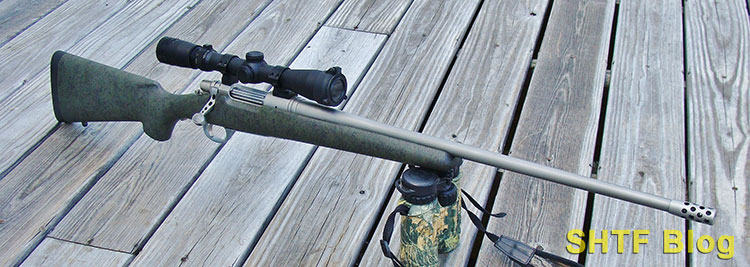
Yup, it was loud! As it turned out, I needed the bonus tag – no complaints there. A less welcome “bonus” involved my ears. They were ringing with a new high-pitched whine that lingers to this day.
Muzzle Brake Advantages and Disadvantages
The advantage to a muzzle brake is dramatically reduced recoil. The disadvantage is a dramatically increased noise.
The prior mentioned rifle was a heavily customized Remington Model Seven, chambered for the now obscure .300 Short-Action Ultra Mag. Like its close relative the .300 WSM, both are roughly on par with the .300 Winchester Magnum. All three calibers are manageable in a standard-weight sporting rifle, but at less than six pounds, my flyweight Model Seven was downright nasty.
Eventually, I invested in a Gentry “Quiet Brake,” which made a huge difference. Whereas, previously, the rifle’s recoil had trashed a scope and caused others to slip in their rings, suddenly I owned one that behaved more like a .243 Winchester!
The tradeoff? Even my “quiet” brake was highly concussive – probably much more so for other unfortunates in its proximity.
That’s the price we pay for the vectoring of high-pressure gas to angles that can decrease recoil. This version works its magic through a series of small radial ports, angled to redirect blast from the shooter.
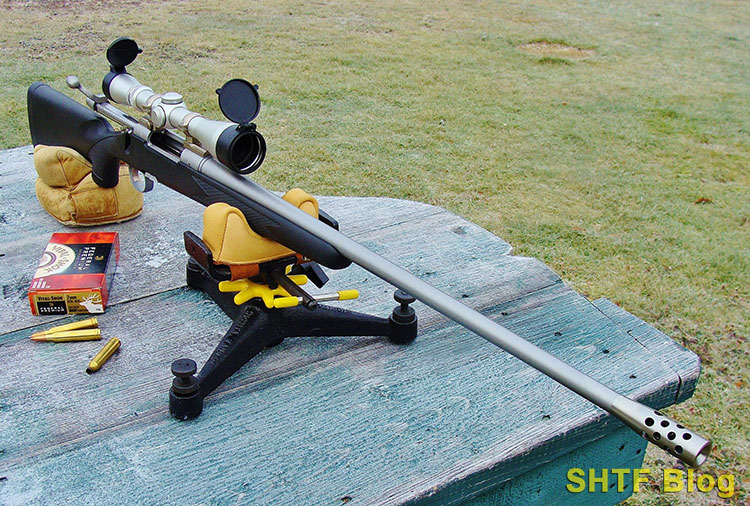
After experiencing the dramatic recoil reduction of my .300 SAUM, Mike bought a brake of his own for a 7mm Magnum Remington Model 700. Like mine, it required the services of a gunsmith for the threading of its barrel. Once again, the recoil reduction was dramatic – at the expense of severe muzzle blast.
Today, he owns several other potent bolt-actions with brakes (did I mention we’re both half-deaf?), which doesn’t mean he can use them everywhere. Some guides won’t allow them in their camps for legitimate reasons. Of course, the standard remedy for their bark is hearing protection.
Hunters can benefit from those designed expressly for this purpose, with both sound-amplification and noise cancellation features.
Factory Alternatives
The cost of a brake and its installation add up, but it’s still within the reach of many – and it’s a whole lot less than a new rifle! But the simplest option is rifle with a factory-installed brake.
Ruger’s bolt-action Hawkeye is one example (among others) that ships with a brake and replacement counterweight.
Either can be installed by the owner of the rifle, and Ruger claims both will provide identical zeros – best verified through actual shooting. A thread-protecting collar is also included.
AR Platforms
The most common AR-15 or AR-10 muzzle device is a G.I. cage. It’s a flash-hider, but also a brake (or, maybe, even a compensator). The ports – actually slots – are absent from the bottom to divert pressure upward while decreasing dust signatures from prone.
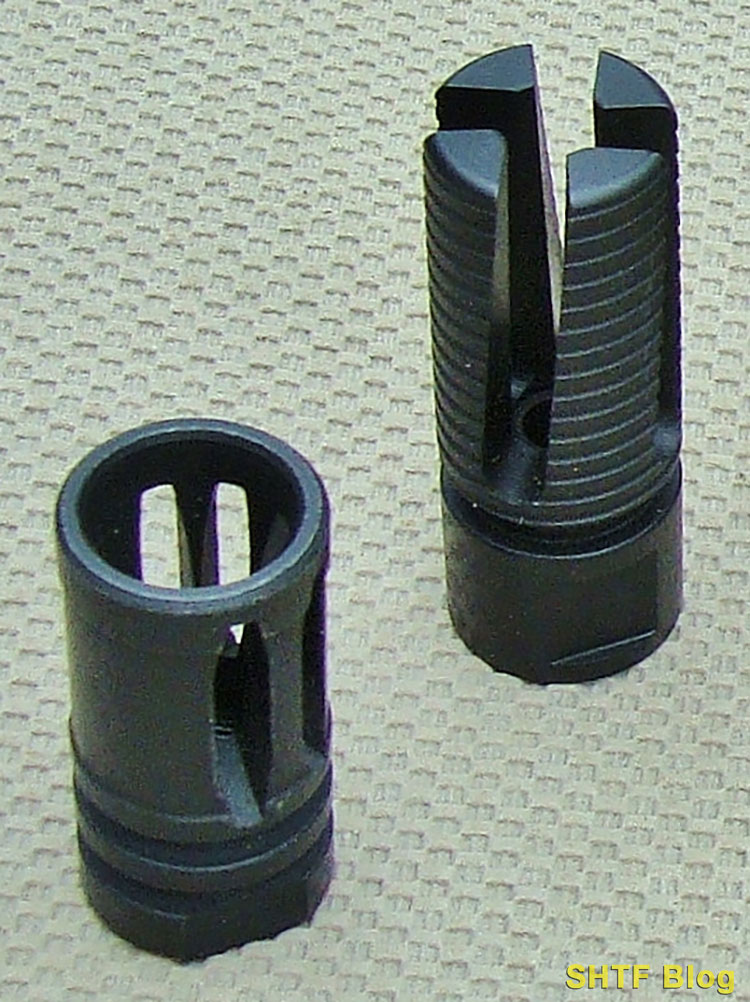
Many of these cages are replaced by aftermarket devices that fit standard AR threads. The most popular AR-15 caliber is .223/5.56, which doesn’t generate much kick. Thus, more interest involves flash-hiders. Also, to a lesser extent, compensators, designed to reduce muzzle climb (more on this shortly).
Brakes and Blast
The effects of muzzle blast are worth considering. I found this out the hard way at the expense of a nice buck; once again using the above Model Seven. One rainy evening while crossing a field, I happened upon a large deer standing broadside in the open at around 150 yards. Almost without any conscious thought, I dropped into prone, lined up my crosshairs, and fired.
The result was a humongous cloud of orange water vapor generated by the brake, inches above wet grass. I may have caught a glimpse of the buck as it streaked toward a stand of dense fir, but even that was a big maybe.
Long story short, I did find the deer, but not until three days later. He’d piled up in the densest cover imaginable – so thick even the ravens never found him.
Over the years, my lightweight Model Seven has reliably filled the family freezer (well, usually) but, for purposes of big game hunting, it’s still the only brake-equipped rifle in the rack.
Compensators
During the late 1970s, combat-type shooting blossomed and the handgun of choice was a Model 1911 Pistol, chambered for .45 ACP. Scoring was a product of hits versus times, so to gain every possible advantage, competitors began adding compensators, which lessened muzzle flip. The result was decreased “dwell time” which led to shorter “splits” (the intervals between each shot).
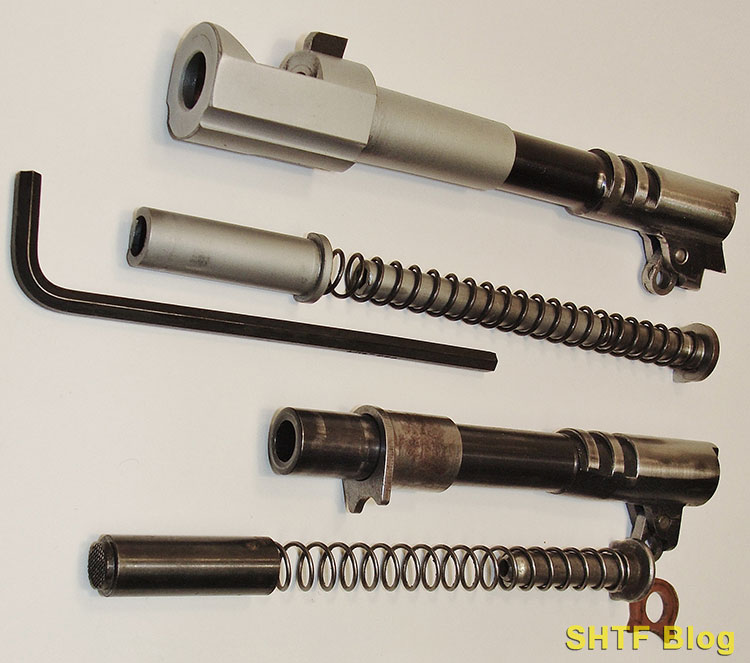
The Classic Compensator
My first compensated acquisition (during the late ‘80s) was a classic example of that era; a customized .45 ACP 1911 from none other than Jimmy Clark. Its muzzle was fitted with a large compensator that featured a gaping vertical port. Firing this pistol was a revelation regarding both accuracy – and recoil.
By this point, many IPSC shooters had transitioned to cartridges like the .38 Super, which fired faster and lighter bullets that produced more port pressure. The latter increased the jet effect, further decreasing muzzle climb for shorter splits.
Nevertheless, my Clark .45 felt a whole lot tamer than any standard 1911! The only real drawback involved the buildup of lead in its expansion chamber, solved by solvents and careful picking with dental tools.
Like other such designs, this arrangement also precluded the use of a standard barrel bushing and guide rod. Instead, the muzzle was centered in the slide via an integral tapered cone, which extended rearward from the comp around the barrel. No doubt, its extra weight soaked up some recoil, but the port still played a key role.
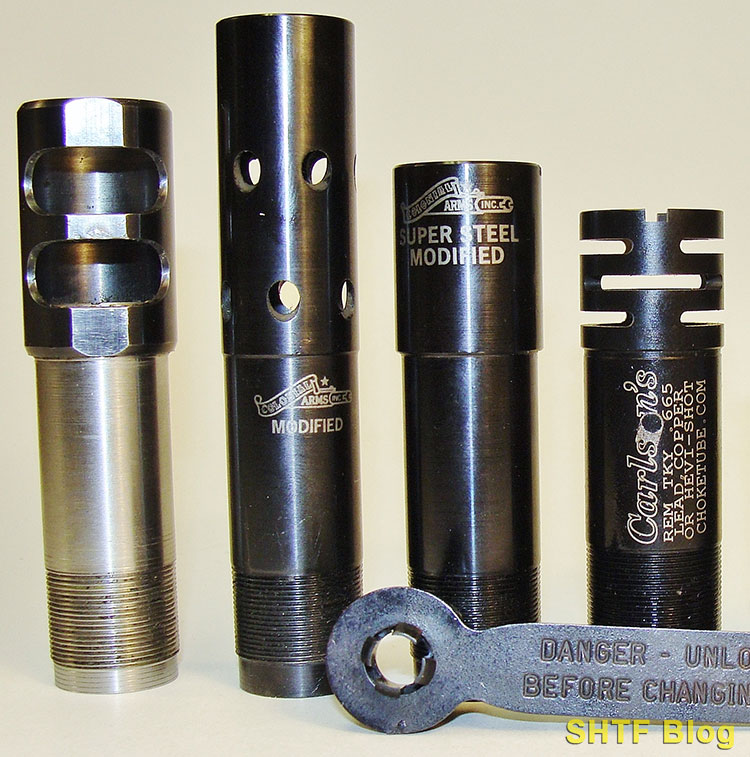
Compensator Variations
Check out an earlier Tommy Gun and you’ll see a similar solution for the control of .45 ACP bursts. Its Cutts Compensator worked well, but was eventually ditched to simplify production. The Cutts design also appeared on sporting shotguns, complete with interchangeable choke tubes. Installation was a project for a gunsmith.
Speaking of shotguns, one amazing screw-in device I own is a compensator built by Briley. It’s large ported chamber has a threaded extension for a Rem-Choke muzzle. Firing 1oz 12 gauge slugs, the recoil-reduction is amazing. Far as I know, it’s no longer offered, possibly because many folks use lighter target loads.
Shotguns operate at much lower pressures, which render compensators less effective. That said, the recent growth of Three Gun competition (see below) has sparked a small revival. For the most, the simpler alternative is a ported choke tube which, if nothing else, should look cool. To me, recoil seems similar, either with or without one.
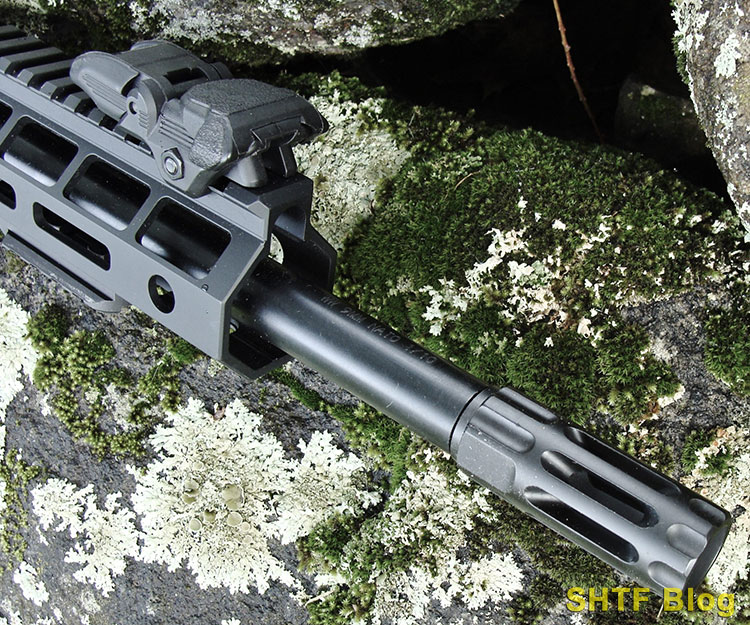
As noted above, the hot new game is “Three Gun,” which combines pistols, rifles, and shotguns. The rifle of choice is, once again, the ubiquitous AR-15, configured for speedy shooting. Most are equipped with compensators featuring multiple ports.
Their purpose is to minimize muzzle rise, for the shortest dwell times and target transitions possible. Like brakes, effective ear protection is essential.
Handgun Compensators
Some of the recent compensator technology has bled into small pistols like Springfield Armory’s 9mm Hellcat. Makes sense given the popularity of threaded barrels. By all accounts the Hellcat’s small comp is effective, however, it must be removed before the barrel can be separated from the slide for routine pistol maintenance.
On the other hand, my .44 Magnum S&W Model 629 PC features an integral compensator. Its two small slots vent lots of pressure, so S&W warns against the use of lead bullets. A couple other powerful S&W revolvers have muzzles configured as brakes, which could pose similar concerns regarding high-speed chunks of expelled lead (never an issue with my old Clark comp and .45 ACP lead SWCs).
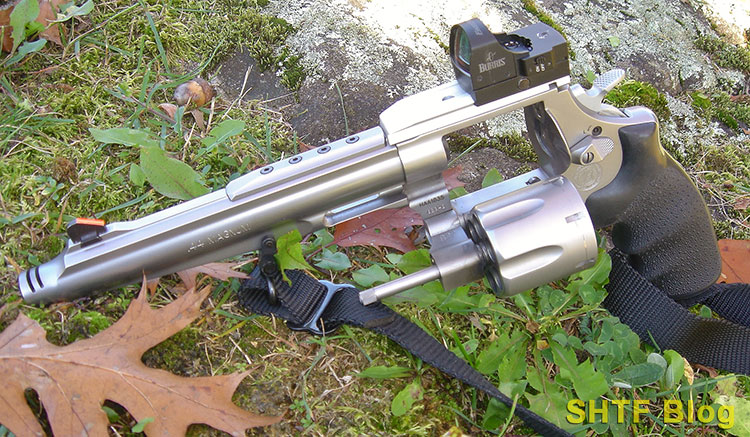
Indexing
Compensators usually require indexing before their ports will perform as designed. The compensator mounted to my 1911 was gunsmith-fitted, as were our brake-equipped Remington rifles. But many devices sold for ARs can be user-installed and indexed using crush-washers, like those that time G.I. cages.
A version I recently fitted refused to index with reasonable torque. Rather than keep cranking, I lined it up by carefully thinning its washer. Another option is a purpose-built shim-kit, sold with an assortment of steel washers in various thicknesses. Through some trial and error (and its chart), you can usually achieve a proper index.
The Porting Alternative
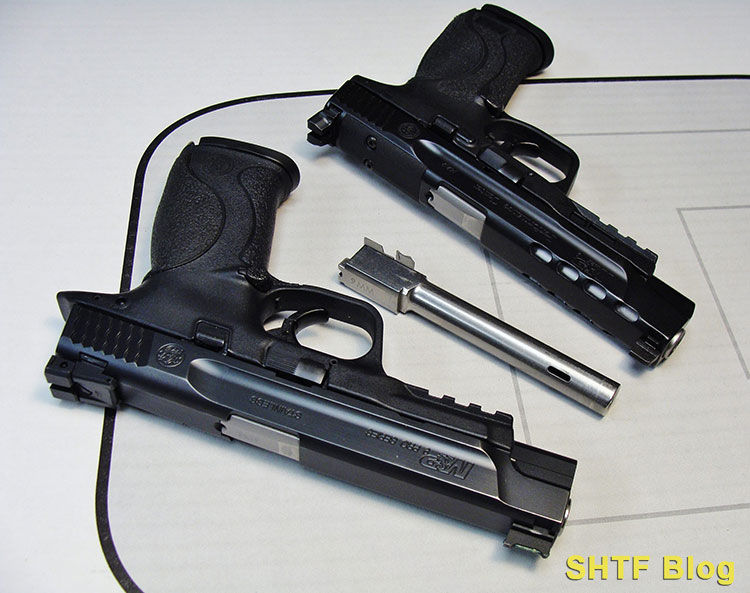
A pioneer of barrel porting is Mag-na-port International. Using precise EDM technologies, small but clean exhaust ports are cut through the upper surfaces of the barrel behind its muzzle. The result is a built-in compensator for handguns, rifles, and shotguns.
Revolvers are ideal handgun candidates, but auto-porting covers semiautos via corresponding slide cuts. Factory-ported pistols are also cropping up from S&W (and probably others). Although not as effective as full-fledged compensators, the ports do decrease muzzle flip.
Shotgun porting seems to be more popular with claybird shooters, who typically use target loads and longer barrels. The several ported shotguns I owned didn’t do much more than accumulate fouling to complicate barrel cleaning. Porting a shotgun barrel is one of the ways you can reduce shotgun recoil.
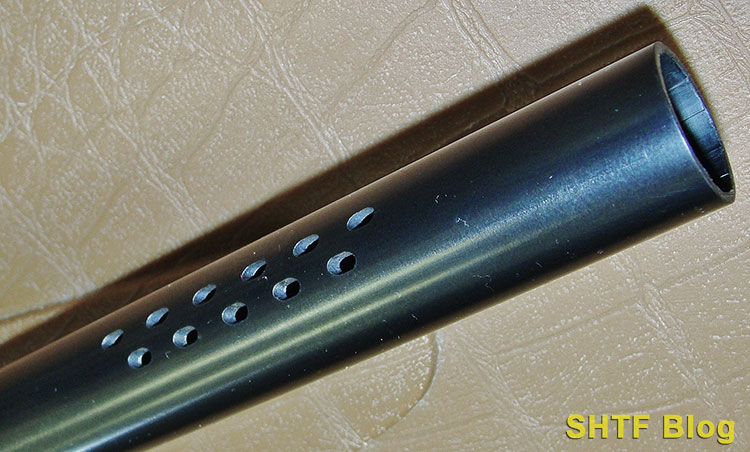
In a duck blind, magnum loads and ported barrels are a ticket to hearing aids.
However, some comp manufacturers now cater to Three Gun shooters after every edge they can gain. Since hearing protection is mandatory, noise is less of an issue.
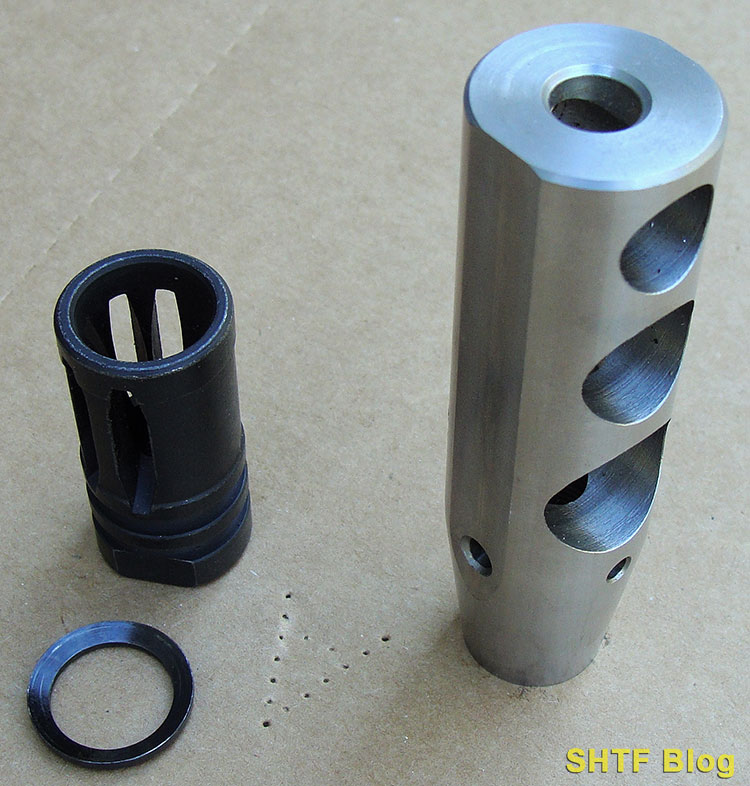
Muzzle Brakes vs Compensators Conclusion
Blast diverters and suppressors are more about noise, a topic for another day. Brakes, compensators, and ports can mitigate the effects of recoil, and some do a darned good job.
But again, noise can be a real concern, especially with hotter calibers. I’ll pass on shooting a .338 Lapua Magnum without a brake, but I won’t be anywhere near its business end with one attached.
And, of course, muzzle blast is a product of powder combustion, which can also produce flames and soot. A fouled night sight can be wiped clean, but nighttime fireworks could cause temporary blindness. Easy test for both: shoot some rounds in the dark, preferably using a loaner system – and don’t forget a good set of hearing protectors!
Steve Markwith is the author of the Survival Guns series of books. Find his books on Amazon.
- Markwith, Steve (Author)
- English (Publication Language)
- 264 Pages - 12/03/2016 (Publication Date) - Prepper Press (Publisher)
